Oregano, Italian Oregano, Marjoram, Creeping Marjoram, Pot Marjoram, Wild Margoram
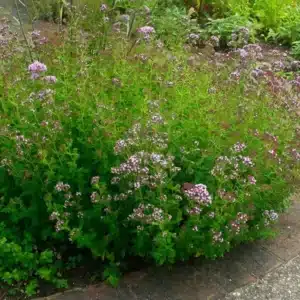
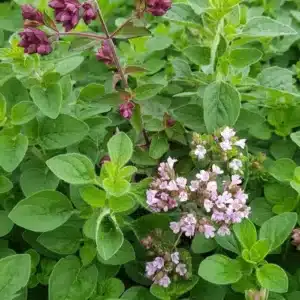
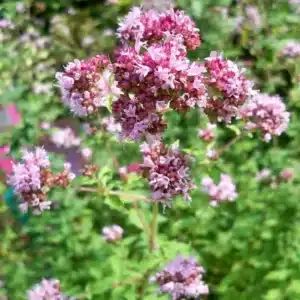
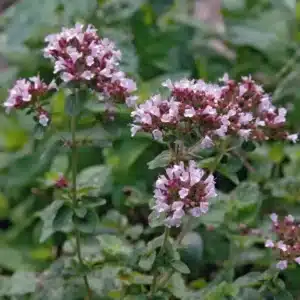
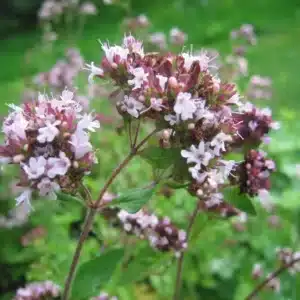
‘Oregano’ is an extremely popular, aromatic herb appreciated by chefs world-wide for its zesty flavor. Although cultivated primarily as a culinary herb in edible gardens, the plant makes a lovely, ornamental groundcover and edging for sunny spaces. This elegant herb looks especially-lovely trailing over the rims of window boxes and decorative containers. Mounding to a height of one to three feet, ‘Oregano’ needs plenty of space to sprawl and spread across the ground. Both the small, oval grayish-green leaves and the pretty pink, purple, or white summer flowers provide a wonderful, spicy flavor in cooking, and are absolutely adored by bees. The plant is often cultivated by beekeepers in close proximity to their hives, resulting in an exceptionally-delicious honey. Perennial within USDA hardiness zones 4-8, this herb is native to the Mediterranean regions of Europe and Asia. ‘Oregano’ has been cultivated for over 4,000 years for its antibacterial properties, and the oil from the leaves is commercially marketed today as an immune booster. ‘Oregano’ was believed to have been a “gift of joy” from the ancient Greek goddess, Aphrodite. The plant’s botanical name, ‘Origanum vulgare’ translates to “Joy of the Mountains.”
‘Oregano’ thrives in well-drained soil and prefers a minimum of six hours of direct sunlight daily. If grown for culinary use, nutrient-rich soil can weaken the flavor of the leaves; therefore the soil should not be enriched. Potted nursery starter plants are available to purchase from most reputable nurseries, and mature plants can be divided or propagated from stem cuttings rooted in water. While ‘Oregano’ can be planted from seed, the flavor may not be as true as from other methods of propagation. Seed can be planted directly into the garden and covered very lightly with soil. ‘Oregano’ is highly-susceptible to fungal disease when grown in heavy, poorly-drained soil and inadequate sunlight. Excellent soil drainage is essential. The plant should be well-watered at the time of planting, and the planting area should be mulched and cleared of competing weeds.
Established ‘Oregano’ plants should be watered only when the surrounding soil has dried. This plant prefers to stay on the dry side and tends to develop fungal disease when over-watered. Regular mulching is beneficial to protect the plant’s roots and keep out weeds.
‘Oregano’ does not require fertilizer. In fact, overly-fertile soil with nitrogen may affect the taste of the leaves and should not be used if the plant is grown for culinary use.
‘Oregano’ plants tend to become woody and should be cut back before flowering for the best flavor, and also to maintain an attractive, mounded form. The plant can be pinched back or clipped whenever needed for shaping.
‘Oregano’ is not affected by any serious pests or diseases. If planted into poorly-drained soil and over-watered, this herb will quickly succumb to fungal disease.













